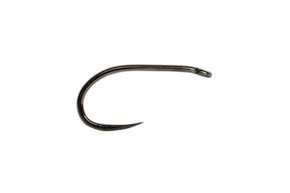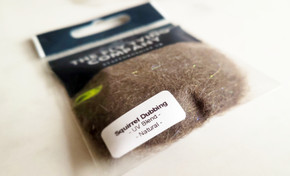Origin and History
The Royal Wulff is one of the most famous attractor dry flies in the world. It was created in the 1930s by Lee Wulff, an American angler and conservationist, who modified the older Royal Coachman pattern. By replacing the delicate feather wings with durable hair wings, Wulff made a fly that floated better, lasted longer, and was easier to see in rough water. The Royal Wulff quickly became a classic for trout fishing across both rivers and stillwaters and remains a staple in fly boxes today.
Materials
- Hook: Dry fly hook, sizes 10–16
- Thread: Black 6/0 or 8/0
- Body: Peacock herl with red floss band in the middle
- Tail: Brown or moose body hair
- Wings: White calf tail or poly yarn, tied upright and divided
- Hackle: Brown and grizzle cock hackle, mixed
Popular Variations
- Royal Trude – with swept back wing instead of upright
- Royal Humpy – humpy-style body for extra buoyancy
- Royal Wulff Cripple – imitates struggling insects
- Royal Wulff Emerger – rides lower in the film
- Royal Wulff CDC – CDC wing for more natural drift
Step-by-Step Tying Guide
- Start thread at the hook eye and wind back to the bend.
- Tie in a small bunch of brown or moose hair to form the tail, about the hook shank in length.
- Tie in two or three strands of peacock herl and wrap a short section for the rear body.
- Add a band of red floss in the centre of the body and secure.
- Tie in another section of peacock herl to complete the front part of the body.
- Tie in a bunch of white calf tail fibres as upright divided wings.
- Select one brown and one grizzle cock hackle and wrap them together, making several turns in front and behind the wings.
- Whip finish neatly and varnish the head.
Seasonality & Representation
The Royal Wulff is primarily an attractor dry fly rather than an exact imitation. It works best from spring through autumn when trout are opportunistic. The red floss, peacock herl, and bushy hackles give it a bold profile that is especially effective in broken water or when visibility is low. It can suggest terrestrials, caddis, or simply an irresistible meal.
Tackle and Setup
- Rod: 8–9ft, 4–6wt
- Line: Floating line
- Leader: 9–12ft tapered, 4–6X tippet
- Setup: Fish singly as a searching dry fly or as an indicator fly with a nymph dropper
Summary Table
| Aspect | Details |
|---|---|
| Origin | Lee Wulff, USA, 1930s |
| Best Seasons | Spring to Autumn |
| Represents | Attractor; suggests terrestrials or caddis |
| Hook Sizes | 10–16 |
| Tackle Setup | 8–9ft rod, floating line, 9–12ft leader |












